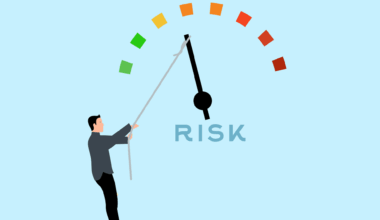Quantitative vs Qualitative Approaches in Strategic Risk Management
Strategic Risk Management (SRM) encompasses both qualitative and quantitative approaches to addressing risk. These methods, while fundamentally different in their execution, complement one another in effectively identifying and mitigating risks within organizations. Quantitative methods utilize numerical data, statistical methods, and mathematical models to evaluate the likelihood of risks and their potential impact. These techniques often involve sophisticated simulations and risk measuring tools such as Value-at-Risk (VaR) and Monte Carlo simulations. On the other hand, qualitative approaches rely on subjective judgment, expert opinions, and scenario analysis. These methodologies focus on understanding the context of risks and their potential consequences without delving deep into statistical data. Qualitative analyses may incorporate tools like SWOT and PESTEL analyses to dissect risks comprehensively. Both methods have distinct advantages, but a balanced integration of the two often yields the most effective results. For organizations facing complex environments, blending quantitative and qualitative risk assessments enables a broader understanding of risks, ensuring informed decision-making and strategic planning that aligns with overarching business objectives. This discourse will further explore their application in strategic risk management.
In understanding the differences between quantitative and qualitative approaches, one must consider their respective merits and limitations. Quantitative approaches provide accuracy and objectivity, allowing companies to base their risk assessments on hard data. This is particularly beneficial for financial risks where numerical accuracy is imperative. By using statistical models, organizations can predict risk exposure and forecast potential losses with greater precision. However, this heavy reliance on data may overlook factors that are not easily quantifiable, such as organizational culture or stakeholder perceptions. Contrastingly, qualitative approaches prioritize human judgment and context-based analysis, enabling stakeholders to interpret the subtleties and intricacies of risks often missed by numbers. While subjective, qualitative analyses can unearth insights about underlying issues that may contribute to risks, particularly in times of uncertainty or change. Nevertheless, these approaches can lack the rigor of quantitative methods, sometimes resulting in biased or inconsistent evaluations. To achieve a holistic view of risks, organizations are increasingly adopting mixed-method strategies that draw on the strengths of both approaches to foster a more robust risk management framework that adapts to evolving strategic needs.
Implementation of Quantitative Methods
In practice, implementing quantitative methods in strategic risk management entails several steps, starting with data gathering. Organizations must compile relevant historical data pertinent to risk factors they look to analyze. Various tools such as risk calculators, models, and analytical software are leveraged to evaluate this data to set measurable benchmarks. The resulting metrics can be instrumental in shaping strategic decisions. Using computational simulation techniques, SRM professionals can project potential outcomes based on different variables, presenting clear visual data for analysis. Additionally, implementation often involves scenario modeling techniques to simulate adverse conditions and forecast risk impacts. Monitoring and updating quantitative models is also crucial, as fixed models can quickly become outdated in a fast-paced business environment. Challenges in executing quantitative methods include ensuring data quality, relevance, and alignment with strategic business goals. Despite these, the insights drawn from quantifiable assessments offer unique perspectives on potential financial impacts and allow organizations to prioritize risks effectively. Therefore, the integration of quantitative methods signifies a proactive response towards understanding and managing risks within strategic frameworks.
Conversely, qualitative methods offer a more narrative-driven approach to risk assessments, allowing for broader stakeholder engagement. This participatory process encourages collaboration and input from various departments within an organization, enhancing the richness of the resultant analysis. By leveraging expert opinions, focus groups, and workshops, qualitative assessments reveal underlying issues that may contribute to risk exposure. Stakeholders involved can express their perceptions, experiences, and potentially unquantifiable aspects of risks based on real-world experiences. However, the results of qualitative methods must be approached cautiously. The subjective nature of this approach can lead to biases, and the outcomes may differ significantly depending on the perspectives of the participants involved. To mitigate these limitations, practitioners often use structured frameworks like expert judgment techniques, ensuring consistency in evaluations. Furthermore, qualitative methods can lead to the identification of emerging risks, particularly in unfamiliar contexts where data may not be available. Consequently, the flexibility and adaptability of qualitative risk assessments make them essential in formulating a comprehensive strategic risk management plan that aligns with business dynamics.
Integration of Both Approaches
The integration of quantitative and qualitative approaches in strategic risk management supports organizations in developing a comprehensive risk profile. Understanding the advantages of both methodologies leads to more informed decision-making processes. A combined approach enables risk managers to validate quantitative findings through qualitative insights, ensuring that the data reflects organizational realities and strategic goals. For instance, while quantitative models might indicate a high financial risk, a qualitative review may uncover underlying operational weaknesses that exacerbate the situation. Furthermore, this integrated strategy fosters agility in risk management, allowing organizations to pivot effectively as new risks emerge or existing ones evolve. Stakeholders positioned at different levels of the organization can share insights that enhance risk understanding and prioritize mitigation strategies comprehensively. As businesses grapple with complexities in their operating environments, the marriage of quantitative precision and qualitative depth creates a more rounded understanding of risks. This dual-layered approach not only deepens organizational insights but also bolsters the confidence of decision-makers when navigating uncertainties in a strategic context.
In conclusion, both quantitative and qualitative approaches are indispensable within strategic risk management. Their inherent differences—and respective strengths and weaknesses—underscore the importance of leveraging both to address risk comprehensively. Quantitative methods offer precision, utilizing numerical data for forecasting and informed decision-making, while qualitative methods foster deeper understanding through human insight and contextual analysis. An effective strategic risk management framework must embrace both dimensions to navigate the complexities of contemporary business environments. Each organization’s unique context and risk profile will dictate the degree to which each approach is utilized or emphasized, leading to a tailored risk management strategy. Effectively integrating these approaches results in a harmonious balance between data-driven decisions and nuanced understanding, crucial for sustaining competitive advantage. As businesses evolve, the demand for more sophisticated risk management approaches will only grow. Therefore, organizations must remain committed to exploring and aligning quantitative and qualitative strategies. This continual refinement will enhance their ability to mitigate risks effectively while capitalizing on emerging opportunities that align with strategic objectives.
The Future of Strategic Risk Management
Looking ahead, the landscape of strategic risk management is poised for transformation. The convergence of technology, data analytics, and evolving business practices will significantly impact how organizations approach risk. Emerging technologies such as artificial intelligence (AI) and machine learning are enhancing quantitative models, providing deeper insights and improving predictive capabilities. Simultaneously, these technologies offer tools to facilitate qualitative assessments by analyzing large volumes of unstructured data, thus supporting better decision-making. Moreover, as global business dynamics shift due to geopolitical tensions and environmental changes, organizations will need robust strategies that address both traditional and emergent risks. The integration of sustainability and corporate responsibility within strategic risk management will also become increasingly critical, as stakeholders demand transparency and accountability. Adopting a forward-thinking approach that embraces both quantitative rigor and qualitative insights will enable organizations to navigate these complexities more effectively. By preparing for future challenges and uncertainties, businesses can ensure resilience and adaptability, securing their strategic objectives while fostering sustainable growth and innovation.
In summary, strategic risk management remains a vital part of ensuring organizational resilience. By thoughtfully integrating both quantitative and qualitative methods, organizations can develop comprehensive frameworks that respond adeptly to risks both foreseen and unforeseen. This dual approach fosters insights necessary to navigate an increasingly intricate risk landscape effectively. Organizations must recognize the value of both methodologies and seek to harmonize their strengths. As the business environment continues to evolve, the ability to adeptly manage and understand risks will be a key differentiator for success. Stakeholders must engage in ongoing dialogues about the implications of risks, promoting proactive engagement rather than reactive strategies. With the right blend of quantitative and qualitative elements, organizations will be better equipped to safeguard their interests and pursue growth opportunities. Ultimately, the realm of strategic risk management is not static but dynamic, necessitating continuous learning and adaptation. Moving forward, principles from both approaches must inform risk management practices, ensuring that they remain relevant and effective in achieving desired outcomes while embracing the evolving challenges inherent in modern business.


